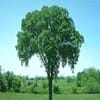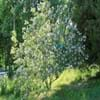Life Span
Perennial
Biennial
Origin
North America
South America
Types
Bergmann's Elm, Chestnut-leafed Elm, Hangzhou Elm
Peruvian peppertree, peppercorn tree, Peruvian mastic
Habitat
Woodland Garden Canopy
Dappled Shade, open Woodlands
USDA Hardiness Zone
3-9
8-11
Sunset Zone
1a, 1b, 2a, 2b, 3a, 3b, 4, 5, 6, 7, 8, 9, 10, 11, 14, 15, 16, 17, 18, 19, 20, 21
H1, H2, 8, 9, 12, 13, 14, 15, 16, 17, 18, 19, 20, 21, 22, 23, 24
Habit
Upright/Erect
Weeping
Flower Color
Green
Light Yellow
Flower Color Modifier
Bicolor
Bicolor
Fruit Color
Tan
Pink, Rose
Leaf Color in Spring
Light Green
Green
Leaf Color in Summer
Dark Green
Dark Green
Leaf Color in Fall
Light Yellow
Dark Green
Leaf Color in Winter
Not Available
Dark Green
Leaf Shape
Ovate
Arrowhead
Plant Season
Spring, Summer, Fall, Winter
Spring, Summer, Fall, Winter
Sunlight
Full Sun
Full Sun, Partial Sun
Type of Soil
Loam
Loam, Sand
The pH of Soil
Acidic, Neutral
Acidic, Neutral, Alkaline
Soil Drainage
Average
Well drained
Bloom Time
Early Spring
Early Spring, Spring, Late Spring, Late Winter
Repeat Bloomer
No
Not Available
Tolerances
Pollution
Pollution, Drought
Where to Plant?
Ground
Ground
How to Plant?
Budding, Grafting, Seedlings, Semi-hardwood cuttings, Softwood cuttings
Seedlings
Plant Maintenance
Medium
Medium
Watering Requirements
Average Water Needs, Do Not over Water, Requires regular watering
Keep ground moist, Water Deeply
In Summer
Lots of watering
Lots of watering
In Spring
Moderate
Moderate
In Winter
Average Water
Average Water
Soil pH
Acidic, Neutral
Acidic, Neutral, Alkaline
Soil Type
Loam
Loam, Sand
Soil Drainage Capacity
Average
Well drained
Sun Exposure
Full Sun
Full Sun, Partial Sun
Pruning
Remove damaged leaves, Remove dead branches, Remove dead leaves, Remove dead or diseased plant parts, Remove deadheads
Cut limbs, Remove damaged leaves, Remove dead branches, Remove dead leaves, Remove dead or diseased plant parts
Fertilizers
Complete balanced fertilizer, fertilize in spring
Nitrogen, Phosphorous, Potassium
Pests and Diseases
Red blotch
Red blotch
Plant Tolerance
Pollution
Drought, Pollution
Flower Petal Number
Single
Single
Fragrant Bark/Stem
No
Yes
Showy Foliage
No
Not Available
Foliage Texture
Medium
Fine
Foliage Sheen
Matte
Matte
Attracts
Birds, Butterflies, Not Available
Birds, Butterflies
Allergy
Pollen
Irritate the mucus membrane
Aesthetic Uses
Not Used For Aesthetic Purpose
Not Used For Aesthetic Purpose
Beauty Benefits
Good for skin and hair
Skin Problems
Edible Uses
Yes
Insignificant
Environmental Uses
Air purification, Nesting sites for birds, Shadow Tree
Air purification
Medicinal Uses
Antispasmodic, Astringent, Birthing aid, Haemostatic, Salve
Antiemetic, Antirheumatic, Appetizer, Digestive, Miscellany, Purgative
Part of Plant Used
Bark, Fibre, Leaves
Fruits, Leaves
Other Uses
Container, String, Used for woodware, Used in paper industry
Condiment, Gum
Used As Indoor Plant
No
No
Used As Outdoor Plant
Yes
Yes
Garden Design
Feature Plant, Shade Trees, Street Trees
Edible, Feature Plant, Rock Garden / Wall, Screening / Wind Break, Shade Trees, Street Trees
Botanical Name
ULMUS americana 'Augustine'
SCHINUS molle
Common Name
American Elm, Augustine Elm
Peppertree
In Hindi
American Elm Tree
Peppertree
In German
Amerikanische Ulme
Peppertree
In French
Américaine Elm Tree
Peppertree
In Spanish
Olmo Americano Árbol
peppertree
In Greek
American Elm Tree
Peppertree
In Portuguese
Árvore de olmo americano
Peppertree
In Polish
Amerykańska Elm Tree
Peppertree
In Latin
Latin ulmo
Peppertree
Phylum
Magnoliophyta
Vascular plant
Class
Magnoliopsida
Magnoliopsida
Order
Urticales
Sapindales
Family
Ulmaceae
Anacardiaceae
Clade
Angiosperms, Eudicots, Rosids
Angiosperms, Eudicots, Rosids
Tribe
Not Available
Not Available
Subfamily
Not Available
Anacardioideae
Number of Species
Not Available
Not Available
Season and Care of American Elm and Peppertree
Season and care of American Elm and Peppertree is important to know. While considering everything about American Elm and Peppertree Care, growing season is an essential factor. American Elm season is Spring, Summer, Fall and Winter and Peppertree season is Spring, Summer, Fall and Winter. The type of soil for American Elm is Loam and for Peppertree is Loam, Sand while the PH of soil for American Elm is Acidic, Neutral and for Peppertree is Acidic, Neutral, Alkaline.
American Elm and Peppertree Physical Information
American Elm and Peppertree physical information is very important for comparison. American Elm height is 3,900.00 cm and width 3,700.00 cm whereas Peppertree height is 1,219.20 cm and width 1,219.20 cm. The color specification of American Elm and Peppertree are as follows:
American Elm flower color: Green
American Elm leaf color: Light Green
Peppertree flower color: Light Yellow
- Peppertree leaf color: Green
Care of American Elm and Peppertree
Care of American Elm and Peppertree include pruning, fertilizers, watering etc. American Elm pruning is done Remove damaged leaves, Remove dead branches, Remove dead leaves, Remove dead or diseased plant parts and Remove deadheads and Peppertree pruning is done Cut limbs, Remove damaged leaves, Remove dead branches, Remove dead leaves and Remove dead or diseased plant parts. In summer American Elm needs Lots of watering and in winter, it needs Average Water. Whereas, in summer Peppertree needs Lots of watering and in winter, it needs Average Water.





